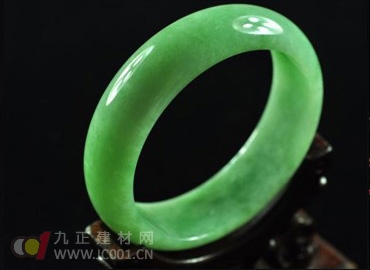Jadeite has been a symbol of cultural significance since its introduction during the late Ming Dynasty, sparking widespread fascination with jade culture. As more people developed an appreciation for jade, demand surged while natural resources dwindled, leading many to express concern that high-quality jade is becoming increasingly rare and expensive.
Historical records indicate that from the Qing Emperor Qianlong onwards, eunuchs and merchants used jadeite collections as a measure of wealth. But what makes jade so desirable? Whether it's a piece of jewelry or a pendant, the first thing one notices is its striking green hue. This vibrant green evokes a sense of calm, serenity, and good fortune, making jadeite appealing due to its unique and bright color.

The distinct green of jadeite goes beyond just emerald-grade stones; it can rival the colors of other gemstones. High-quality jadeite should display a pure and rich green tone, with appropriate saturation and brightness. Color is the most important factor in evaluating jade quality. A well-colored jade will have a glossy surface and good transparency, with green being the most prized among various hues like red, yellow, purple, brown, white, and blue.
Generally, top-grade jadeite must exhibit a pure and vivid green, with balanced brightness and saturation. If a jadeite item achieves this green color, it is considered a premium product. Natural emerald green often appears in filamentous or flaky aggregates, frequently surrounded by lighter, colorless, or other tones. When the green color and surrounding hues complement each other harmoniously, the overall color quality is considered exceptional.
For example, the "Yi Feng Lai Yi" brand of jadeite from the Qing Dynasty exemplifies this ideal. It is uniformly green, with a slightly deeper tail, showing excellent color coordination and intricate carvings that reflect auspicious meanings.
Color plays a key role in determining the value of jadeite. The range of colors is vast, from deep to light, and from rich to pale. These variations not only add to the charm of jadeite but also serve as a basis for pricing. Jadeite is typically divided into three categories based on quality:
- **Top Grade**: Extremely rare, with pure emerald green and high transparency.
- **Commercial Grade**: More common, featuring a variety of colors such as green, purple, red, and gray. Differences between high and low grades are subtle in terms of shade and uniformity.
- **Ordinary Grade**: The most abundant, accounting for about 90% of production. It includes colorless varieties and is priced much lower than the top grade.
Top-grade jadeite can be as valuable as diamonds, while commercial and ordinary grades are measured in kilograms, highlighting their price differences.
Today, the jade market offers a wide array of colors. Many buyers are drawn to jadeite that is intensely green or visually striking. However, if the jade is genuine, it likely falls into the top-tier category and comes with a high price. Unfortunately, counterfeit versions are often found in these popular styles, so careful inspection is essential.
Experts suggest that jadeite with a small amount of green and bright color may not be the most eye-catching, but it is still a fine variety with a more moderate price. This type is perfect for collectors who enjoy jade without breaking the bank.
Mini DC Water Valve,Mini Solenoid Water Valve,Mini Electric Water Valve,Mini Water Control Valve,Mini Water Check Valve
Shenzhen DYX Technology Co.,Limited , https://www.dyxpump.com